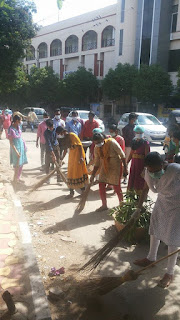Around 1.6 million people died in India and China in 2015 due to air pollution caused by fossil fuel, particularly coal, according to a report released on Friday.
“Air pollution due to continued use of fossil fuels, (coal in particular) in both the countries has caused an additional 1.6 million deaths than the projected figure based on the GDP growth rate for the year 2015,” the report by Greenpeace said.
It said out of the 10 countries with the highest air pollution death rates, half were middle-income countries including India.
“Air pollution generally reduces as a country’s GDP increases. But China and India have particularly bad air pollution despite recent economic growth.
“Although air pollution death rates have fallen in China and India since 1990, they are still worse than in most similar countries. In India, rates have not improved since 2010. Continued use of coal is a major reason for the high air pollution death rates in both countries,” the report said.
In 2015, pollution claimed 138 and 115 lives per 1,00,000 people in India and China respectively, the report said.
According to Global Burden of Diseases (GBD), the actual numbers of deaths in India were about 1.8 million and 1.5 million in China. The expected number of deaths based on GDP in India and China were calculated to be 1.2 million and 5,58,000 respectively.
The report further claimed that in India, the air pollution death rate was nearly four times greater than the rate in high-income countries.
Air pollution is among the top causes of premature death worldwide, causing only slightly fewer deaths than tobacco smoking. In both China and India, indoor air pollution deaths are falling and the rate is now lower than the outdoor air pollution death rate, it said.
The report also underlined the perils of coal power stations.
“One reason coal power stations in India cause particularly large amounts of air pollution is that there are only limited controls on their emissions,” it added.


























